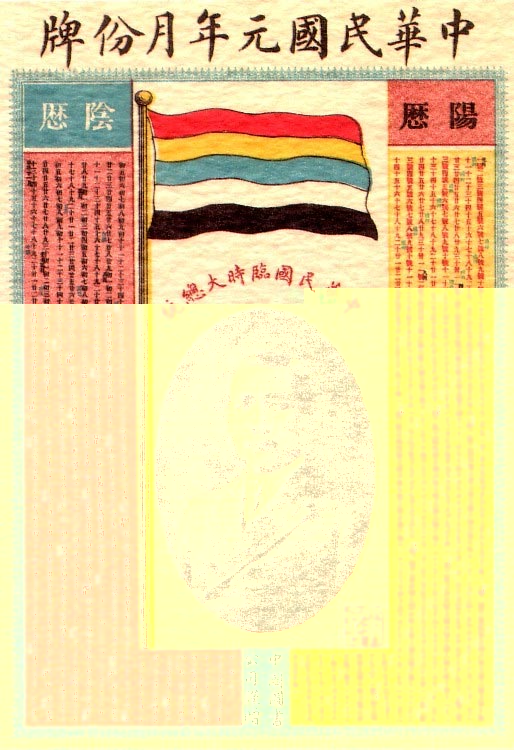The Republic of China calendar (民國紀元) is the method of numbering years currently used in the Republic of China (ROC) (Taiwan, Penghu, Kinmen, and Matsu). It was used in mainland China from 1912 until the founding of the People's Republic of China in 1949.
Following the Imperial tradition of using the sovereign's era name and year of reign, official ROC documents use the Republic (Chinese: 民國; pinyin: míngúo; literally "The Country of the People") system of numbering years in which the first year (民國元年) was 1912, the year of the founding of the Republic of China. For example, 2009 is the "98th year of the Republic" (民國九十八年, 民國98年, or simply 98). As Chinese era names are traditionally two characters long, 民國 (Republic) is employed as an abbreviation of 中華民國 (Republic of China).
To find out the ROC year equivalent to any C.E. year, subtract the C.E. year by 1911 (the year of the revolution which led to the formation of the ROC). For example: 2009 C.E. - 1911 = 98th year of the Republic.
Months and days are numbered according to the Gregorian calendar. Based on Chinese National Standard CNS 7648: Data Elements and Interchange Formats -- Information Interchange -- Representation of Dates and Times, (similar to ISO 8601), year numbering may use the A.D. system as well as the ROC era. For example, May 3, 2004 may be written 2004-05-03 or R.O.C.93-05-03.

The ROC era numbering happens to be the same as the numbering used by the Juche calendar of North Korea, because its founder, Kim Il-sung, was born in 1912. The years in Japan's Taishō period (July 30, 1912 to December 25, 1926) are also coincident with the ROC era.
